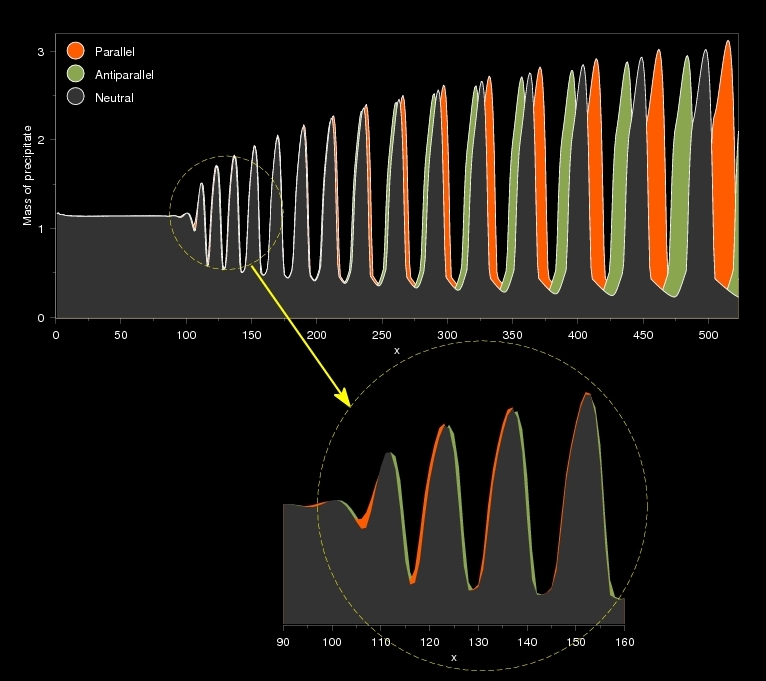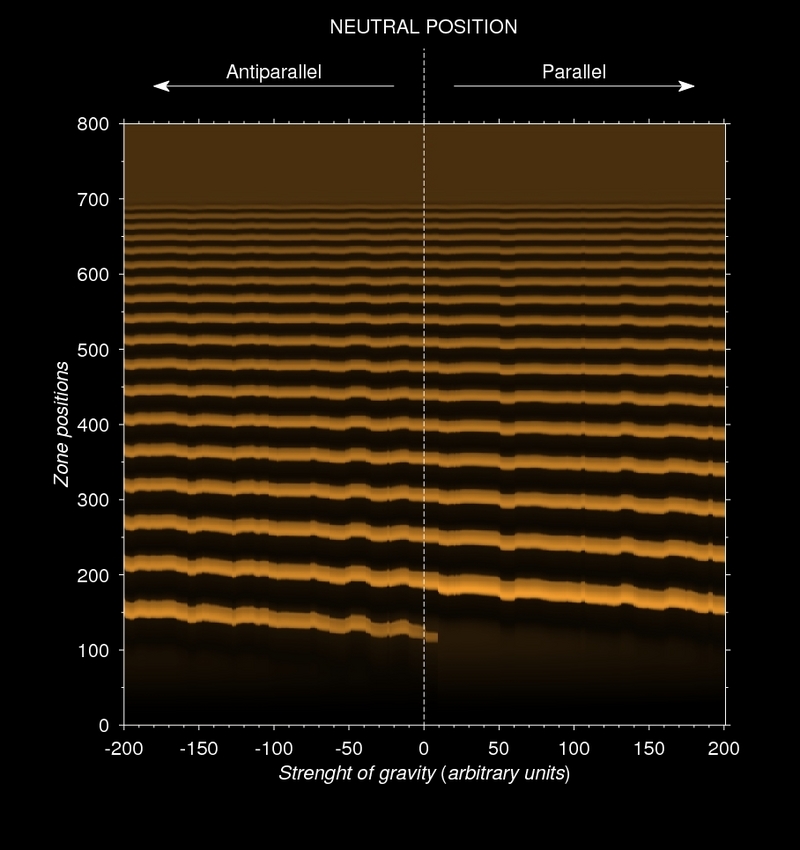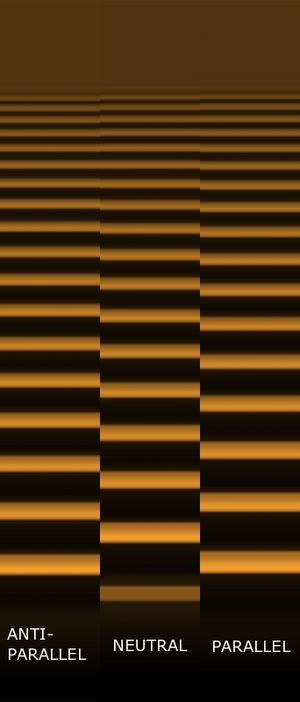Effect of gravity on Liesegang patterns
It has been observed in several experiments that gravity has a small impact on Liesegang patterning. We get slightly different patterns when the experimental arrangement is parallel, antiparallel or perpendicular to the direction of the external field.

Effect of an external force
This finding is often mentioned as an experimental evidence of the diffusional movement of sol particles, because the shift of the Liesegang rings always corresponds to the direction of the external force.
Until now the effect of gravity has only qualitative explanations. As to my best knowledge no mathematically reinforced analytical models or numerical simulations have ever addressed this problem. As it can be clearly seen from the picture the IDNB model can completely reproduce the above mentioned effect.
The figure on left shows three one dinmensional simulations with the effect of gravity "switched on". The shift of the zones is clearly visible and is rougly (although not linearly) proportional to the strenght of the external field.
Try to follow the zone positions starting from the top of the patterns! Please note that these simulations correspond to a rather strong gravitational field. The effect in reality can be much smaller.
The "antigravity effect"
The direction of the gravitational shift always corresponds to the expected for the zones with higher ordinal number. However the ones at the beginning of the structure simetimes move into the opposite direction that the external field would dictate. Therefore it seems that in the case of Liesegang patterning there exeists an "anti-gravity" effect as well, that - certainly - has nothing to do with antigravity.
This shift to the opposite direction is always very small, so it is highly probable that in the real experiments it has been regarded as an experimental error or has not been observed at all.


Gravitational jitter
Another interesting finding is the non-monotonous nature of the effect. If we perform a series of simulations in that the strenght of the externaf field increases continually the shift of the precipitate zones will be continuous only in certain regions. Between these an oscillation can be observed (see the simulated film of this numerical experiment).
This effect is clearly the consequence of the coupling between a non-linear reaction-diffusion mechanism and the linear external impact.

Simulations show that the effect of gravity is a non-monotonous function of field strength
